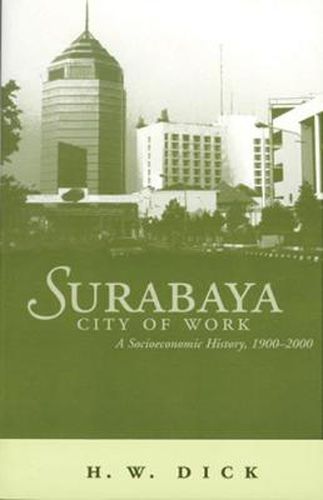Readings Newsletter
Become a Readings Member to make your shopping experience even easier.
Sign in or sign up for free!
You’re not far away from qualifying for FREE standard shipping within Australia
You’ve qualified for FREE standard shipping within Australia
The cart is loading…






Surabaya is Indonesia’s second largest city but is not well known to the outside world. Yet in 1900, Surabaya was a bigger city than Jakarta and one of the main commercial cities of Asia. Collapse of sugar exports during the 1980s depression, followed by the Japanese occupation, revolution, and independence brought on a long period of stagnation and retreat from the International economy. Not until the 1990s export boom did it regain prominence as Southeast Asia’s leading noncapital-city industrial area. Thinking on Indonesia is being reassessed in light of recent political and economic upheaval. Surabaya, City of Work offers an alternative to the Jakarta-centric focus of most writing on the country. It is a multifaceted view of a fascinating and complex city in the dimensions of time and space, economy and society. The current transition towards decentralisation makes it highly topical. Exploration of this eventful economic history gives new insight into Indonesia’s modern economic development. Industrialization is recognised to be associated with rapid urbanization but this is the first study of Indonesia from an explicitly urban perspective. Surabaya, City of Work takes a broad approach that links industrialization to socioeconomic trends, the increasing role of government, changing land use, and trade patterns. This local history of national events and trends will be a basic work on Indonesia for years to come.
$9.00 standard shipping within Australia
FREE standard shipping within Australia for orders over $100.00
Express & International shipping calculated at checkout
Surabaya is Indonesia’s second largest city but is not well known to the outside world. Yet in 1900, Surabaya was a bigger city than Jakarta and one of the main commercial cities of Asia. Collapse of sugar exports during the 1980s depression, followed by the Japanese occupation, revolution, and independence brought on a long period of stagnation and retreat from the International economy. Not until the 1990s export boom did it regain prominence as Southeast Asia’s leading noncapital-city industrial area. Thinking on Indonesia is being reassessed in light of recent political and economic upheaval. Surabaya, City of Work offers an alternative to the Jakarta-centric focus of most writing on the country. It is a multifaceted view of a fascinating and complex city in the dimensions of time and space, economy and society. The current transition towards decentralisation makes it highly topical. Exploration of this eventful economic history gives new insight into Indonesia’s modern economic development. Industrialization is recognised to be associated with rapid urbanization but this is the first study of Indonesia from an explicitly urban perspective. Surabaya, City of Work takes a broad approach that links industrialization to socioeconomic trends, the increasing role of government, changing land use, and trade patterns. This local history of national events and trends will be a basic work on Indonesia for years to come.